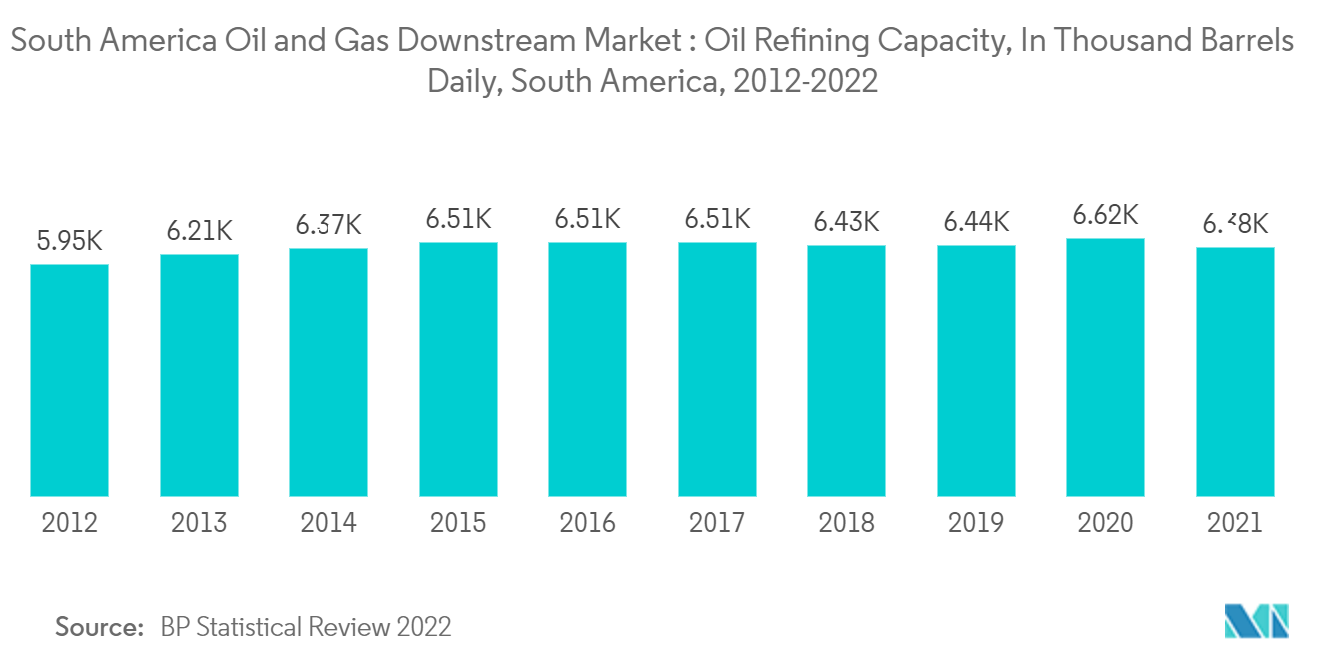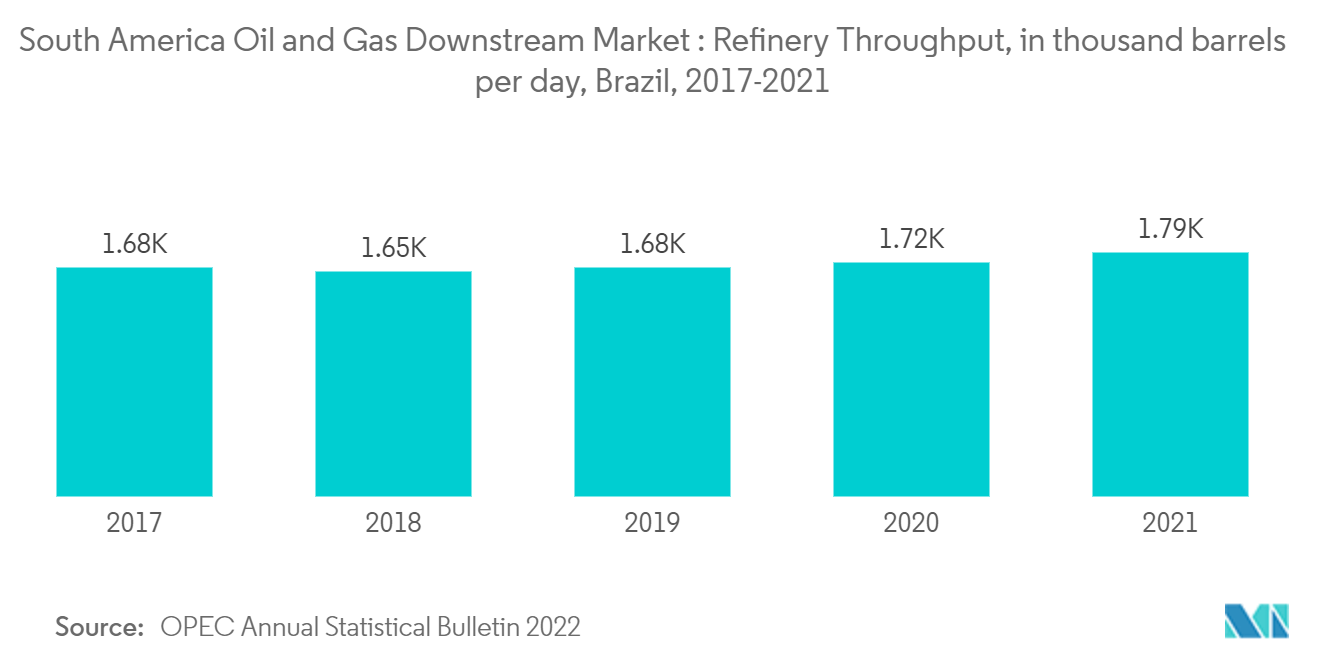Market Trends of South America Oil and Gas Downstream Industry
This section covers the major market trends shaping the South America Oil & Gas Downstream Market according to our research experts:
Refinery Sector to Witness Significant Growth
- South America's refining sector is expected to register high growth during the forecast period, owing to the several expansion projects proposed by countries like Brazil, Argentina, Colombia, etc. According to OPEC Annual Statistical Bulletin 2022, in South America, the capacity of refineries had increased from 6,618 thousand barrels per day (kb/d) in 2018 to 6,648 kb/d in 2021.
- The refinery utilization rate dropped sharply in Brazil, from an average of 85% in 2008-2016 to 75% in 2017-2019. This rate is expected to be increased in the coming years, owing to upcoming projects and increasing investments in the refinery sector.
- In January 2021, Brazilian company Macro Desenvolvimento requested authorization from the National Agency of Petroleum, Natural Gas and Biofuels (ANP) to build and operate a USD 480 million natural gas processing unit (UPGN) in Presidente Kennedy municipality, Espírito Santo. The construction work is planned to start in December 2023 and is expected to be completed by 2025. Therefore, the government's move to open the country's downstream sector to private players is expected to boost the demand for EPC services in the downstream segment in Brazil during the forecast period.
- Moreover, In Argentina, the YPF (Argentina's major oil and gas company) has the Luján de Cuyo refinery, which has a nominal capacity of 114 mbbl/d. In August 2021, this refinery started the operation of the ethyl tertiary-butyl ether plant. This plant is a revamp of a former plant of MTBE, and its goal is to optimize the blending of ethanol in motor gasoline. In 2021, the processing of the Luján de Cuyo refinery was also affected by the lower availability of crude oil from the basins of the Mendoza Province.
- Furthermore, Colombia is also showing signs of development in the country's downstream oil and gas sector, particularly in the refineries segment. For instance, in September 2022, Colombian state oil company Ecopetrol completed expansion works at its Reficar oil refinery in Cartagena as it seeks to meet rising domestic fuel demand. This expansion consolidates the Cartagena refinery as a strategic asset to guarantee Colombia's energy sovereignty. Also, this refinery would now produce diesel and gasoline with sulfur content levels below 100 parts per million (ppm) and 50 ppm, respectively. Such developments are likely to create a positive impact on the refinery sector in the region.
- Therefore, based on the above factors, the refinery sector is expected to witness significant growth in South America's oil and downstream gas market during the forecast period.

Brazil to Dominate the Market
- As of 2021, Brazil has 17 refineries, of which 98% of the country's total refining capacity is operated by the state-owned oil and gas company Petrobras. Most of the refineries are located near demand centers on the country's coast. As part of its Strategic Plan (2021-2025), Petrobras announced the divestment of eight of its 12 existing refineries and plans to sell its remaining stakes in the midstream and fuels distribution sectors by 2022. This move, initiated by Brazil's Mines and Energy Ministry, is aimed at facilitating the sector's ability to achieve an effective transition to an open and competitive downstream sector.
- In addition to the existing refineries, private firms are planning to enter Brazil's refining market in the coming years. For instance, in May 2020, the US-based firm Oil Group announced its plans to build a USD 300 million refinery with a capacity to deliver 20,000 b/d of oil derivatives in Brazil's Açu port, Rio de Janeiro. The plant is expected to come online by 2024, with the possibility of being expanded to 50,000 b/d in the coming years. The company is also studying the implementation of five more small refineries in Brazil.
- The entrance of private players in the market only became possible after the state firm started following international prices for derivatives sales. Before that, the sale of products below market prices generated big losses for the firm and prevented competitors from participating.
- According to the OPEC Annual Statistical Bulletin 2022, the country's refinery throughput totaled 1,785 thousand barrels per day in 2021, i.e., an increase of about 4% when compared to the previous year's value (1,717 thousand barrels per day).
- Therefore, based on the above-mentioned factors, Brazil is expected to dominate the oil and gas downstream sector in the South American region during the forecast period.


